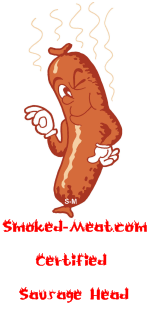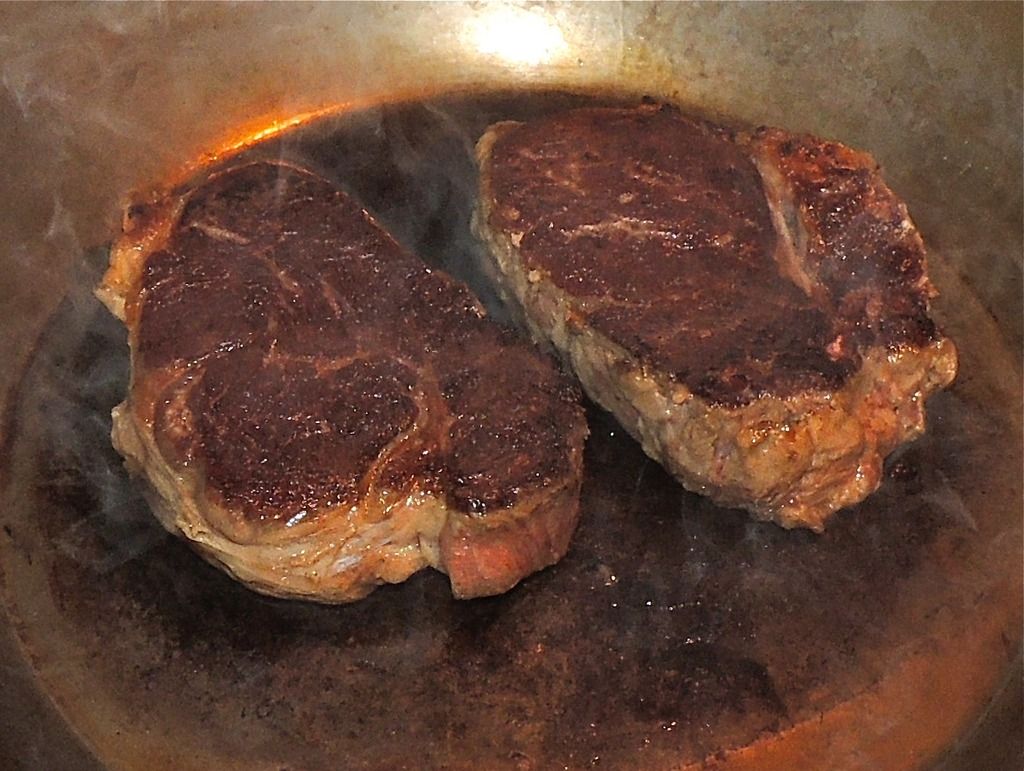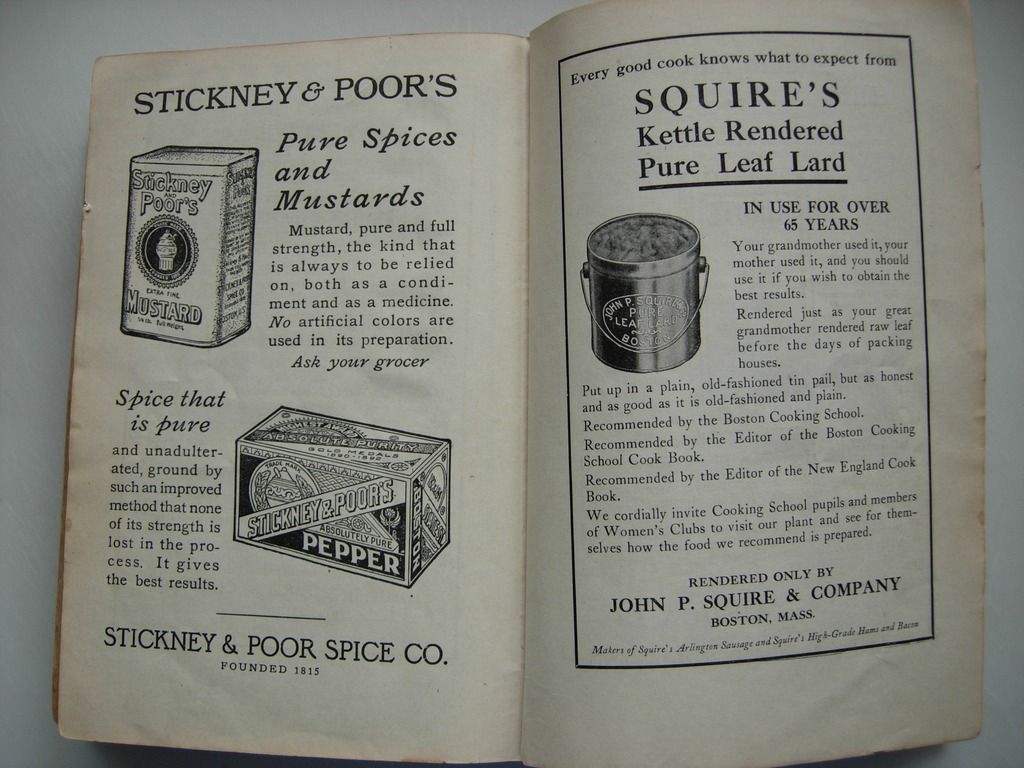Unless the lard you buy is refrigerated then it is hydrogenated and is no better than Crisco...Well that's how I understand it anyway...
Announcement
Collapse
No announcement yet.
questions for the CI crowd about flax seed oil
Collapse
X
-
Up here we get "SnowCap Lard on the shelves of the refrigerated section.

It probably has ZERO flavor, due to all the processing etc., but I rub down the firebox of my offset with it now and then, and it looks as nice and new as the day I got it.Fundamentals matter.

Helfen, Wehren, Heilen
Die Wahrheit wird euch frei machen
Foods of the World Forums - From Afghanistan to Zimbabwe, it's all good
BaitShopBoyz.com - Shoot the bull with the boyZ
Comment
-
Leaf lard, fatback, and supermarket lard - Wikipedia
Lard production
Lard can be obtained from any part of the pig where there is a high concentration of fatty tissue. The highest grade of lard, known as leaf lard, is obtained from the "flare" visceral fat deposit surrounding the kidneys and inside the loin. Leaf lard has little pork flavor, making it ideal for use in baked goods, where it is valued for its ability to produce flaky, moist pie crusts. The next-highest grade is obtained from fatback, the hard subcutaneous fat between the back skin and muscle of the pig. The lowest grade (for purposes of rendering into lard) is obtained from the soft caul fat surrounding digestive organs, such as small intestines, though caul fat is often used directly as a wrapping for roasting lean meats or in the manufacture of pâtés.
Lard may be rendered by either of two processes: wet or dry. In wet rendering, pig fat is boiled in water or steamed at a high temperature and the lard, which is insoluble in water, is skimmed off the surface of the mixture, or it is separated in an industrial centrifuge. In dry rendering, the fat is exposed to high heat in a pan or oven without the presence of water (a process similar to frying bacon). The two processes yield somewhat differing products. Wet-rendered lard has a more neutral flavor, a lighter color, and a high smoke point. Dry-rendered lard is somewhat more browned in color and flavor and has a lower smoke point. Rendered lard produces an unpleasant smell when mixed with oxygen.
Industrially-produced lard, including much of the lard sold in supermarkets, is rendered from a mixture of high- and low-quality fat sourced from throughout the pig. Lard is often hydrogenated to improve its stability at room temperature. Hydrogenated lard sold to consumers typically contains fewer than 0.5 g of transfats per 13 g serving. Lard is also often treated with bleaching and deodorizing agents, emulsifiers, and antioxidants such as BHT. These treatments make it more consistent and prevent spoilage. (Untreated lard must be refrigerated or frozen to prevent rancidity.)
Consumers seeking a higher-quality source of lard typically seek out artisanal producers of rendered lard, or render it themselves from leaf lard or fatback.
A by-product of dry-rendering lard is deep-fried meat, skin and membrane tissue known as cracklings.sigpic
Fully Accessorized Primo XL Oval,
-BBQ GURU DigiQ DX2,
-AMNPS
-And various other do-dads, gimmicks,
gizmos and hornswaggles
Comment
-
And there you have it.In God I trust- All others pay cash...Check out the Mad Hunky and products at https://madhunkymeats.com or https://www.facebook.com/MadHunkyMeats
Lang 60D, The Beast, 18 and 22 WSM, Brinkmann Backroads trailer, Weber 22 Kettle, gutted MB burning watts
Comment
-
After all is said and done, while I still own a few cast iron skillets, I haven't used one in since I bought a set of carbon steels. I liked these so much I also bought a couple of deep sauté pans. The larger one has replaced my wok.
Carbon steel has never really caught on in the US but they are a standard in European communities. They season like CI and become non stick like CI but have 2 distinct advantages. They are lighter (but not by much) and the cooking surface is as smooth as glass. These pans turn black as the seasoning builds and they must be cared for in the same way as CI. They love high heat but you will notice eggs slide around on the polished cooking surface.
My set of 4 pans when they arrived. The 14" is a monster with a helper handle.

Chilaquiles are an example of a delicate cook.

Check the high temp sear on these steaks.
 sigpic
sigpic
Fully Accessorized Primo XL Oval,
-BBQ GURU DigiQ DX2,
-AMNPS
-And various other do-dads, gimmicks,
gizmos and hornswaggles
Comment
-
YUP!Originally posted by gracoman View PostLeaf lard, fatback, and supermarket lard - Wikipedia
Lard production
Lard can be obtained from any part of the pig where there is a high concentration of fatty tissue. The highest grade of lard, known as leaf lard, is obtained from the "flare" visceral fat deposit surrounding the kidneys and inside the loin. Leaf lard has little pork flavor, making it ideal for use in baked goods, where it is valued for its ability to produce flaky, moist pie crusts. The next-highest grade is obtained from fatback, the hard subcutaneous fat between the back skin and muscle of the pig. The lowest grade (for purposes of rendering into lard) is obtained from the soft caul fat surrounding digestive organs, such as small intestines, though caul fat is often used directly as a wrapping for roasting lean meats or in the manufacture of pâtés.
Lard may be rendered by either of two processes: wet or dry. In wet rendering, pig fat is boiled in water or steamed at a high temperature and the lard, which is insoluble in water, is skimmed off the surface of the mixture, or it is separated in an industrial centrifuge. In dry rendering, the fat is exposed to high heat in a pan or oven without the presence of water (a process similar to frying bacon). The two processes yield somewhat differing products. Wet-rendered lard has a more neutral flavor, a lighter color, and a high smoke point. Dry-rendered lard is somewhat more browned in color and flavor and has a lower smoke point. Rendered lard produces an unpleasant smell when mixed with oxygen.
Industrially-produced lard, including much of the lard sold in supermarkets, is rendered from a mixture of high- and low-quality fat sourced from throughout the pig. Lard is often hydrogenated to improve its stability at room temperature. Hydrogenated lard sold to consumers typically contains fewer than 0.5 g of transfats per 13 g serving. Lard is also often treated with bleaching and deodorizing agents, emulsifiers, and antioxidants such as BHT. These treatments make it more consistent and prevent spoilage. (Untreated lard must be refrigerated or frozen to prevent rancidity.)
Consumers seeking a higher-quality source of lard typically seek out artisanal producers of rendered lard, or render it themselves from leaf lard or fatback.
A by-product of dry-rendering lard is deep-fried meat, skin and membrane tissue known as cracklings.
That's what I thought...
The lard I can buy has little of the great attributes of the lard I have read about...So I don't use it anymore...Craig
sigpic
Comment
-
Originally posted by gracoman View Post
Good call Gracoman. I used the Sheryl Canter method several years ago with good results.
Comment
-
The “wet” method ain’t too bad..especially with cold weather. Just set the pot outside overnight and harvest the lard in the AM.Originally posted by SMOKE FREAK View PostWell put Roscoe...Well put...
I figure ya gotta make yer own to get the good stuff and I'm just too lazy to do that...In God I trust- All others pay cash...Check out the Mad Hunky and products at https://madhunkymeats.com or https://www.facebook.com/MadHunkyMeats
Lang 60D, The Beast, 18 and 22 WSM, Brinkmann Backroads trailer, Weber 22 Kettle, gutted MB burning watts
Comment
-
sigpic
Fully Accessorized Primo XL Oval,
-BBQ GURU DigiQ DX2,
-AMNPS
-And various other do-dads, gimmicks,
gizmos and hornswaggles
Comment
-
Here,s a good read on seasoning fat, and an excelent CI site in general.
http://www.castironcollector.com/seasoning.phpsigpic
Comment



Comment